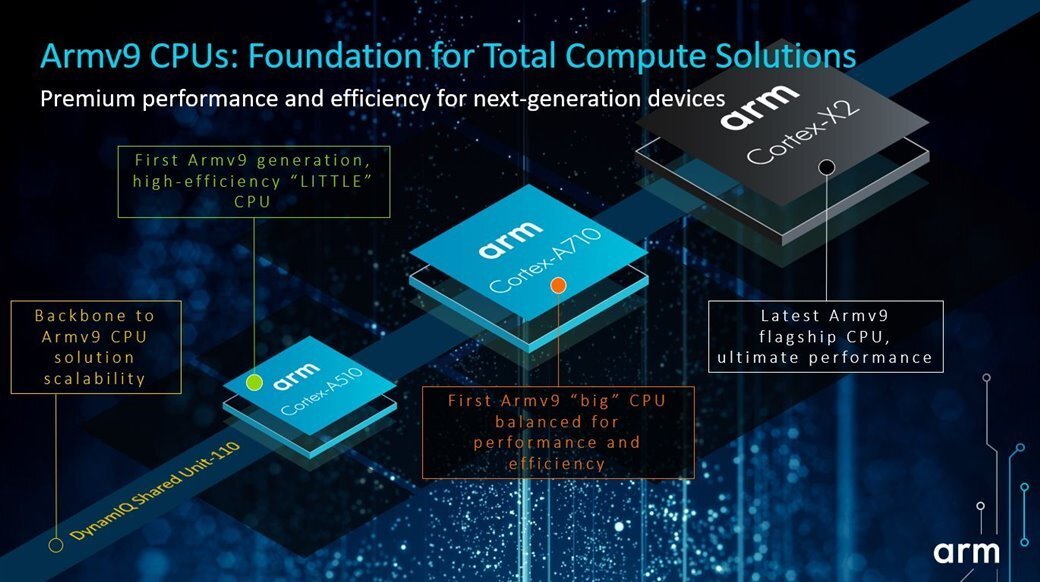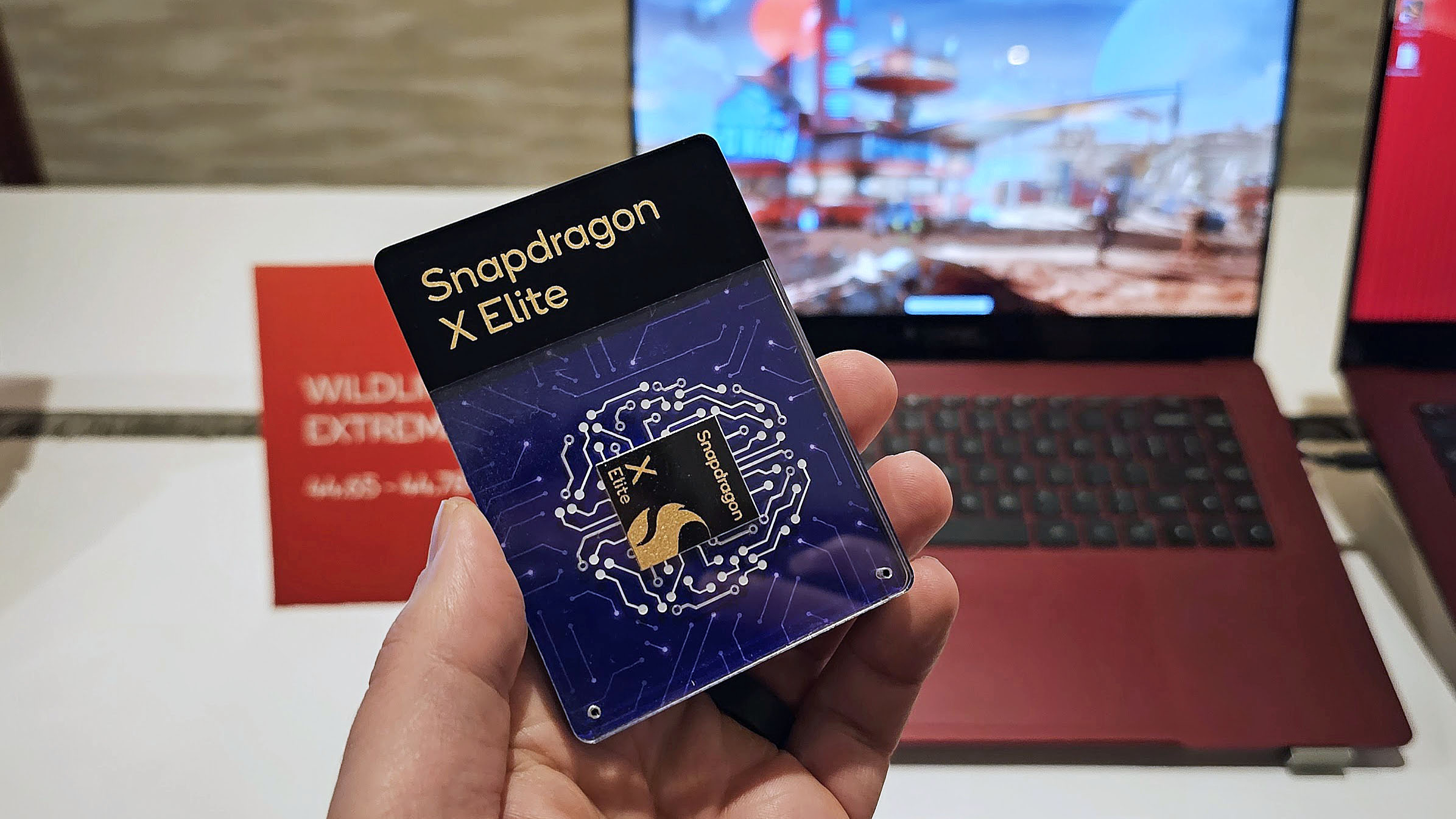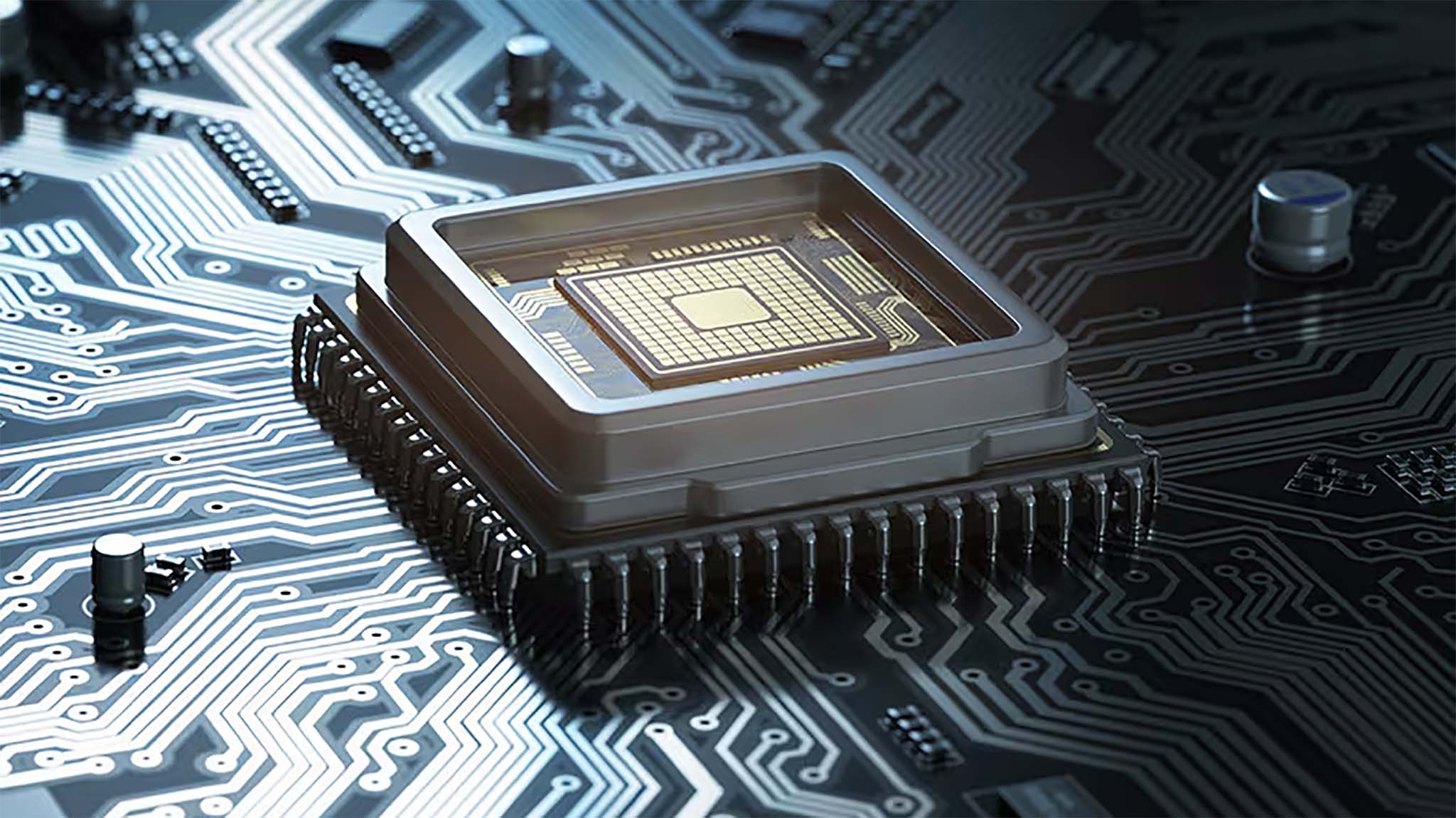
Lately, we've seen a marked increase in Windows laptops (and other devices) that utilize ARM processors rather than traditional CPUs (central processing units). ARM didn't just come out of thin air, though. No, ARM processors have played a large role in many people's electronic devices for more than the last two decades.
But many still don't know a lot about this processor technology. What exactly is ARM? What kind of devices use ARM? How do ARM processors differ from CPUs? Why is Windows on ARM such a big deal? Why is ARM often mentioned in conjunction with Apple and Qualcomm? Let's dive in and discuss.
Note: There's a technical argument for how to refer to RISC tech. This page uses "ARM" to discuss the general computing architecture technology and the original company name while "Arm Ltd." or "Arm" refers to the company names as they currently are.
What is ARM anyway?

There's a lot to learn about ARM-based processors, so we'll start with the basics:
What is an ARM processor?
"ARM" or "Arm" is a name for a type of RISC instruction set architecture (ISA). An ARM processor simplifies instructions for the computer to help a system run more efficiently.
ARM processors tend to be less powerful than traditional CPUs, but they also require less power to run. Many companies choose to work with ARM-based processors in order to create lightweight devices with long battery life that offer solid, well-balanced performance.
What is an ARM-based RISC?
A reduced instruction set computer (RISC) is literally a type of computer architecture that simplifies instructions sent to a computer to allow a system to run more efficiently. As such, an ARM-based RISC is a type of RISC computer processor architecture designed to work with an ARM SoC (system on a chip).
What makes ARM different from other processors?
CPUs from Intel and AMD are provided and placed inside OEM computers (manufacturers like Dell, Lenovo, etc.) as they are, without OEMs changing these processors besides the power draw/thermal envelope, aka TDP.
Intel and AMD design their own x86-x64 processors (CPUs), but only Intel goes the extra step and makes them in its fab, which is why Intel is so powerful. However, AMD relies on a company like TSMC to make its chips.
Meanwhile, a company like Qualcomm or MediaTek purchases licenses from Arm Ltd. to use core ARM CPU components and architecture. With these licenses, manufacturers can legally alter or adjust ARM architecture or connect an ARM processor to the chip. In other words, while Qualcomm goes on to design some of the SoC's components, the base of the processor comes from Arm Ltd., which designed and licensed it.
After the ARM chip is finalized by Qualcomm or MediaTek, it then goes on to a company like TSMC to manufacture it.
(That said, Qualcomm's new Snapdragon X Elite and Snapdragon X Plus chips are, for the first time, designed by themselves without Arm Ltd.).
Because of this difference, an ARM processor is called an SoC because it includes a CPU, GPU, and, these days, an NPU and things like a 5G modem. In other words, these chips have multiple components on one "board" rather than just being a single CPU.
Arm processors tend to be more focused than CPUs on what they do, and they often aren't as powerful as CPUs either. However, ARM processors tend to require less power to operate, so devices using ARM processors tend to last longer before recharging.
What's the difference in ARM64 vs x64 and x86?
In the world of CPUs, the x86 and newer x64 are the most common architecture types used with laptops. The x86 can only have a reserve of up to 4GB RAM whereas the x64 can access more than this, making it more powerful. Meanwhile, AArch64 (or ARM64) is a 64-bit extension of ARM architecture that can access more than 4GB RAM. However, it isn't as powerful as x86 or x64 architecture. ARM64 has traditionally been utilized in smartphones and smaller devices, but it's being used more and more with laptops and tablets as time goes on.
Why is Windows on ARM such a big deal?
Over the last few years, Microsoft's biggest competitor, Apple, has seen huge success with MacBooks and iPads which use the company's M1, M2, M3, and recently announced M4 ARM chips. Meanwhile, the Microsoft Surface line of devices has also sold well with its SQ1, SQ2, and SQ3 ARM chips. But now, more Windows on ARM competitors are going up against macOS on ARM.
For context, Windows software has traditionally been used on x86 and x64 processor computers, but lately the far less power-hungry Arm SoCs (Systems on a Chip) have proven to provide far better battery life than traditional CPUs for smartphones and laptops. In other words, putting Windows on ARM has allowed various manufacturers like Dell, Lenovo, and more to produce reliable Windows laptops that offer good performance with longer-lasting batteries than other CPU laptop options.
It's currently rumored that Microsoft is also working on a new Windows build (code-named Germanium) designed around the Qualcomm Snapdragon X Elite, another ARM-processor. So, Windows isn't going away from ARM processors anytime soon. If anything, the age of Windows on ARM is just heating up.
What is a Snapdragon X SoC?
It's a System on a Chip made for Windows on ARM devices that features a 10-core Oryon CPU alongside an Adreno GPU and a Hexagon NPU. You can learn more about it at our Snapdragon X Plus guide.
A brief ARM history

ARM processors and devices might be getting a lot of attention lately, but this isn't a new tech by any stretch. No, ARM architecture has been around since 1990, with ARM (originally standing for Acorn RISC Machine) founded as a joint venture for Apple, Acorn Computers, and VLSI (thanks CNBC). These days, the company stands on its own as Arm Ltd.
Rather than producing its own CPUs like AMD and Intel do, Arm Ltd. sells licenses for core CPU components and ARM architecture. Companies who purchase these licenses can then use these components and chip architecture legally to create more customized processors for their specific needs.

- Best Windows on ARM laptops
- Qualcomm Snapdragon X benchmarks
- Best AI PC laptops
- I finally tried Windows on ARM and I love it
ARM processors were used with devices like Nokia phones and Texas Instruments in the 90s and then became the dominant architecture for touchscreen phones in the 2000s and 2010s. In fact, the first iPhone (2007) used ARM technology and so have many Motorola, HTC, and Samsung phones. Outside of the mobile arena, Nintendo has used several ARM processors in its gaming handhelds, while Raspberry Pi also takes advantage of them. So even if you haven't been aware of what ARM-based processors are, you've likely used or seen an ARM device at some point in your life.
The very first Windows on ARM processor was the NVIDIA Tegra, which came out in 2012. These days, several big tech companies work with ARM-based chips such as Intel, AMD, Qualcomm, Dell, Lenovo, Apple, Microsoft, and more. ARM-based processors traditionally haven't been super powerful, but that's not their focus. The reason companies continue to work with ARM is because this technology vastly improves battery life while offering balanced device performance. So you can see why smartphones and smaller devices that emphasize portability (like the Microsoft Surface line) utilize this kind of technology.
Currently, the latest ARM architecture is Armv9, which was first introduced in 2021.
Today's Apple vs Qualcomm rivalry
Recent benchmarks revealed by Qualcomm show that the ARM64 Snapdragon X Plus is faster than Apple's ARM M3 chip. And no, this isn't because Qualcomm's processor has more cores. Of course, the recently announced M4 looks like it will outperform Snapdragon X Elite, but both are bound to be powerful.
Now, some people claim that you cannot compare Apple's M Series chips against Qualcomm Snapdragon X, and I'm going to tell you why that is completely ridiculous. To fully understand, I recommend watching Snazzy Lab's YouTube Video, but I'll summarize by taking us back in time a bit.
Purchasing ARM licenses is how Apple made a big splash in 2020 by moving away from Intel's x86 chips in favor of creating its own ARM-based M1 chip. The M1 chip became associated with lightweight laptops with great battery life and decent performance. Since then, the company has gone on to build upon its "M" series ARM Apple Silicon with the M2 and M3 chips.
M Series Apple silicon in some ways shares the same DNA as Snapdragon X Elite not only because they are both ARM processors but also because they were both initially developed by some of the same people.
The thing is, you basically cannot talk about Apple ARM processors without bringing up Qualcomm. In 2019, a trio of former Apple employees — Gerard Williams III (Apple's former chief architect for iPhone chips), John Bruno (former system architect at Apple), and Manu Gulati (former lead SoC architect at Apple) — brought their knowledge of ARM processors with them and founded a new company called Nuvia. Here the trio continued to build upon their designs outside of Apple's restrictions. They did so well, that the semiconductor manufacturer, Qualcomm, acquired them in 2021. (Oddly enough, Arm sued Qualcomm over its acquisition of Nuvia claiming that the deal breached Nuvia's licensing agreements with Arm Ltd.)
But the big takeaway here is that M Series Apple Silicon in some ways shares the same DNA as Snapdragon X Elite, not only because they are both ARM processors but also because they were both initially developed by some of the same people. It's just obvious now that the trio that left Apple have been able to produce ARM processors that are faster than Apple.
Qualcomm's biggest competitors are Intel and AMD

While it's fun to compare Apple and Qualcomm ARM processors, Qualcomm's real competition isn't Apple — it's actually AMD and Intel. And currently, Qualcomm is the biggest ARM processor competitor in the space.
There was a point where Intel was the biggest chipmaker in the USA by far, but times have changed, with AMD providing strong CPU competition that often outpaces Intel's own CPU performance (and while selling for less too). It's odd to think, but Qualcomm is actually currently a larger company than Intel (thanks CNBC).
You might recall that AMD and Qualcomm have spent the last years producing AI-boosting NPUs (neural processing units) to keep up with growing AI demand (you can learn more at my NPU guide). Well, Intel only just entered the NPU market this year with its Intel Core Ultra line. Even so, Intel's AI processors haven't performed as well as AMD or Qualcomm. A benchmark released by Qualcomm itself specifically shows that Snapdragon X Elite beats out Intel Core Ultra.
Intel's name might still hold some gravitas, but the company is losing clout to its rivals who offer better performance. As time goes on, Qualcomm's ARM technology will continue to improve, and we'll likely see a lot more powerful Windows on ARM devices in the future.
Devices that use ARM processors

This is by no means a full list of ARM processor devices, but rather a quick list to give a general idea of the types of devices (past and present) that use ARM.
- Microsoft Surface devices, Apple iPad, Apple M-Series MacBooks, Lenovo ThinkPad laptops, Dell Inspiron laptops
- Apple iPhone, Apple iPod, Motorola phones, Nokia phones, Samsung phones, HTC phones, Blackberry phones
- Raspberry Pi, Roku 2
- Game Boy Advance, Nintendo DS, Nintendo DSi, Nintendo 3DS, Nintendo Wii U, Nintendo Switch
- Garmin Navigation Devices, TomTom navigation devices
- HP Calculators, Texas Instruments
If you're interested, you can see a more thorough list of products using ARM processors at Wikipedia.
ARM FAQ

There is a lot to learn when talking about ARM processors, so here's a catch-all, ARM FAQ to answer any addition questions you may have.
What does ARM stand for?
ARM originally stood for Acorn RISC Machine, and was named for the British tech company Acorn Computers, which originally had a hand in its creation. However, ARM later became known as the acronym for Advanced RISC Machines. Today, the company behind this processor architecture is known as Arm Ltd.
SoC vs processor vs CPU: What's the difference?
A CPU is a collection of hardware components, known as a processor, that work together to receive and send base instructions for a computer system. Meanwhile, an SoC is a more focused and less powerful computing option that is also more efficient at a balanced performance level. Both an SoC and a CPU have their uses, and one might be better suited than another for specific tasks.
What are the limitations of Windows on ARM?
Windows on ARM used to be rather limited, but that really isn't the case now. It used to be that drivers and programs often weren't compatible with ARM, but now most (if not all) of your apps will work with Windows on ARM laptops. The only exception to this could be smaller developers who haven't released ARM64 drivers for their software.
Why is Windows on ARM so bad?
This is honestly an older sentiment at this point, but one worth responding to. It's true that at one point Windows on ARM was far more limited than on a traditional Windows laptop because many programs didn't have ARM64 extensions. However, this has changed through the years. These days, you can run most (if not all) of your apps on a Windows on ARM device.
You can learn more about this at our ARM PSA about how all of your apps will work on Windows 11.
Why is ARM so popular?
ARM architecture allows computer manufacturers to have more control over their products. From a consumer standpoint, ARM processor devices are desirable thanks to their lightweight designs, great battery life, and great performance.
Is Windows available on ARM?
Yes. ARM devices can easily run Windows 10 and Windows 11.
Should "ARM" be capitalized?
Both "ARM" written in all caps and "Arm" with just the first letter capitalized can be correct depending on the use case. ARM was originally an acronym for Acorn RISC machine, so many tech writers put the word in all caps when talking generally about the technology. However, the Arm Limited company itself currently just capitalizes the first letter in its name. Meanwhile, the 64-bit extension for ARM architecture is written with all caps, "ARM64" while specific compute technologies only have a capitalized first letter, like "Arm Cortex-X1" or "Armv9-A."
It's kind of confusing. But, as a general rule of thumb, "ARM" is correct when referring to the original company, specific extensions/drivers, or the technology in general. Meanwhile, "Arm" is what you want to write when talking about the modern company or its specific computing technologies.
Will x86 be replaced by ARM?
Both x86 and ARM have their merits and so while I do think they will end up having different focuses as time goes on, I don't think one will overtake the other in the next decade.
Is Raspberry Pi ARM?
Yes, the first Raspberry Pi used a Broadcom BCM2835 SoC with an ARM processor. Since then, several Raspberry Pi devices have also utilized ARM processors. The latest Raspberry Pi 5 also has a 64-bit 2.4 GHz quad-core ARM Cortex-A76 processor.







